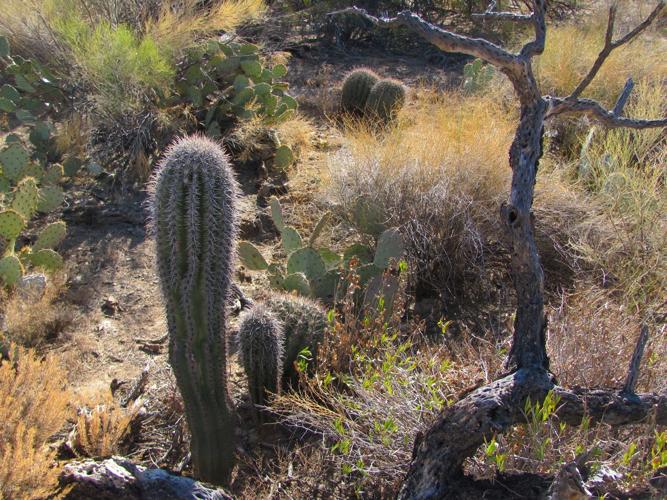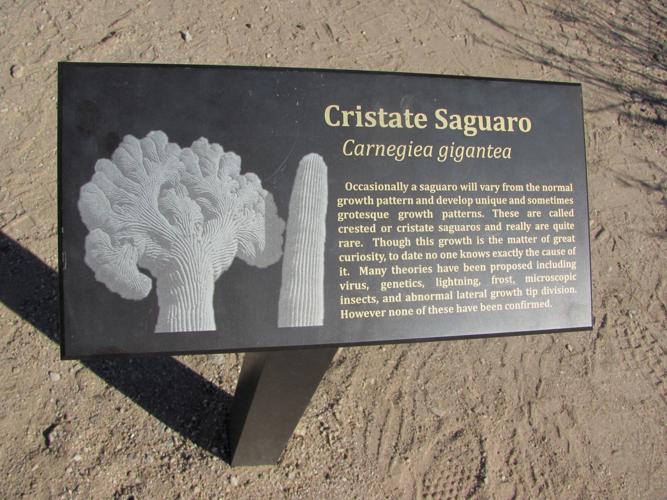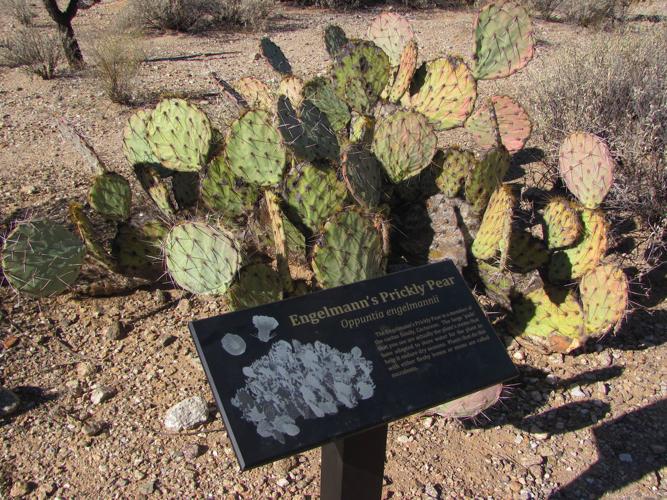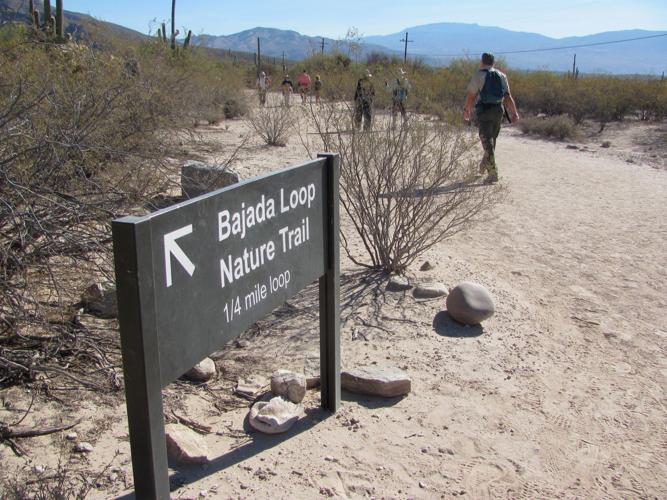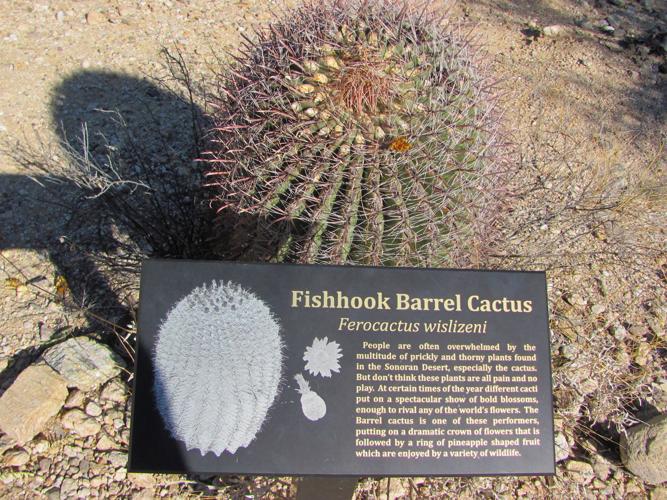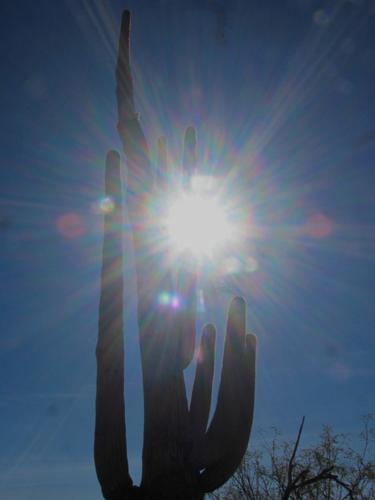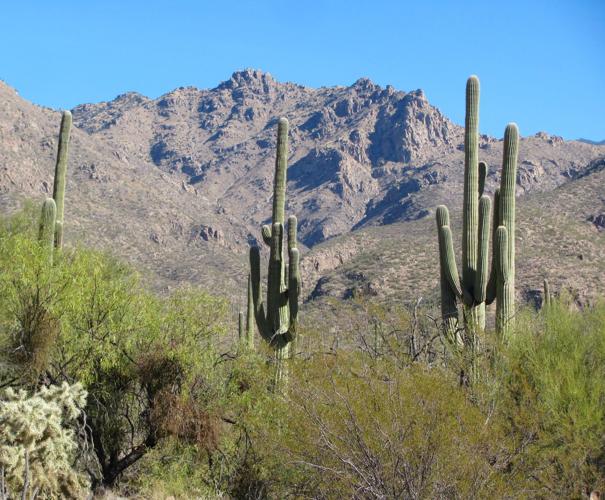It’s a self-taught course — call it Desert 101 — and class is in session any time you like on the Bajada Loop Nature Trail in Sabino Canyon.
There, a rich mix of Sonoran Desert vegetation lines the quarter-mile loop trail, and information signs along the way offer lots of little known facts about the plants.
You’ll learn, for example, that the foothills palo verde tree has green bark for a very good reason.
Their bark is green because it “contains chlorophyll in its cells which means that active photosynthesis occurs in the branches and trunks as well as in the tiny leaves,” says a sign next to one of the trees. “This way the trees can still produce the food they need even after they have to shed many of their leaves due to the hot dry weather.”
A sign next to an enormous cristate, or crested, saguaro describes its unusual shape.
“Occasionally a saguaro will vary from the normal growth pattern and develop unique and sometimes grotesque growth patterns,” the sign says. “These are called crested or cristate saguaros and really are quite rare. Though this growth is the matter of great curiosity, to date no one knows exactly the cause of it.”
As you continue with Desert 101 during a walk on the trail, you’ll learn about the ways and means of other desert plants. Among them:
- Turpentine bush — “These small dark green shrubs are named turpentine bush due to the aroma given off by their leaves when they are crushed,” says an information sign. “It is reminiscent of the smell of turpentine.”
- Fishhook barrel cactus — A sign relates that fishhook barrels put on “a dramatic crown of flowers that is followed by a ring of pineapple shaped fruit which are enjoyed by a variety of wildlife.”
- Creosote bush — “Creosote is often noted for the fresh small caused by certain chemicals when it rains, often called ‘the smell of rain.’ ... When a plant becomes old or damaged, it starts new growth by dividing at the base, essentially creating a clone. In this way creosote bushes can live thousands of years.”
- Graythorn — “Native Americans have used it for various remedies including sore eyes, and many groups use its bark or roots as an alternative to soap.”
Other plants in the Desert 101 syllabus include brittlebush, desert hackberry, canyon ragweed, velvet mesquite, catclaw acacia and Engelmann’s prickly pear.


